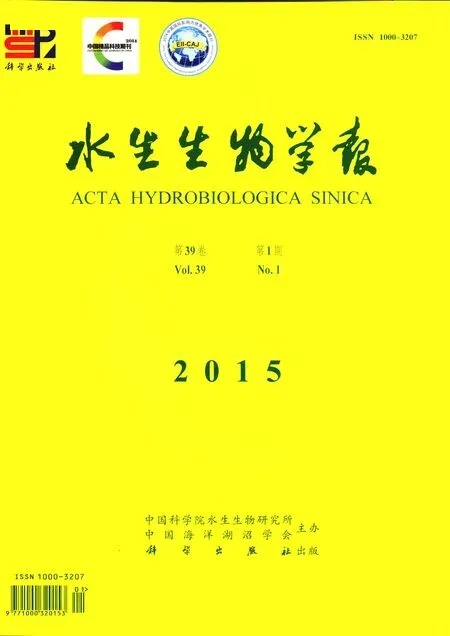BANDING TECHNIQUES AND PAINTING ON CHROMOSOME OF EPINEPHELUS MALABARICUS
ZHOU Ai-Guo , CHEN Jin-Tao , XIE Shao-Lin , CHEN Yan-Feng, WANG Chao and ZOU Ji-Xing
(1. College of Animal Science, South China Agricultural University, Guangzhou 510642, China; 2. Qingyuan North River Fishery Science Institute, Qingyuan 511510, China; 3. College of Life Science, Foshan University, Foshan 528231, China)
Abstract: Epinephelus malabaricus (Perciformes, Serranidae), a rare marine commercial fish, inhabits in the warm-water reef along the southeast coast of China. Chromosome specimens of grouper E. malabaricus,sampled from kidney cells in metaphase by vivo injection of phytohemagglutinin (PHA) and treatment with colchicine, from which well-scattered, clear, and longitudinal bands were obtained by restriction endonucleases (Alu I) demonstrated by in situ nick translations. Most chromosomes presented 8—10 bands, at least 4.The number and characteristics of the bands in the homologous chromosomes were stable, and the major features of the same serial chromosomes from different mitotic metaphase figures were identical. The chromosome specimens were then painted with human X and Y chromosome-specific DNA probes. Surprisingly,some homologous segments of human X chromosome were found in the E. malabaricus genome, and all the segments were scattered in three pairs (t7, t13, t22) in homologous grouper chromosomes. The nearest distance between the centromere and the fluorescent in situ hybridization (FISH) signal from the t7, t13 and t22,was 62.3%, 43.4% and 44.4%, respectively, and the homologous segment of human X chromosome was about 4.63% of the E. malabaricus genome. No homologous segment of the human Y chromosome was found. These may provide a new research approach for the evolution from lower vertebrates to human sex chromosomes.
Key words: Epinephelus malabaricus; Restriction endonuclease banding; Painting of chromosomes; Human X and Y chromosome-specific DNA probes
As a rare marine commercial fish, Epinephelus malabaricus (Perciformes: Serranidae) inhabits in warm-water reef along the southeast coast of China.Studies on E. malabaricus have mainly focused on aquaculture technology and nutritional component analysis, few reports on cytogenetics have been published. Studies in cytogenetics have significant importance to resource utilization, genetic breeding, and phylogeny position identification. The study of fish chromosomes started as early as the 1930s. Since the study of Epinephelus diacanthus karyotype had been reported by Natarajian[1], approximately 20 Epinephelus species have been studied, including chromosome banding[1—3], while a lot of researches have been done in other kinds of species, such as shellfish[4], Gadus macrocephalus[5]. The study on chromosome banding techniques help to make better understanding on the structure and banding mechanism of grouper chromosome as well as providing a preliminary analysis and exploration for the preparation technology and genetic markers characteristic of grouper chromosome REs banding. Meanwhile, the painting on chromosome was expected to find a new way to seek for traces of origin and evolution of human sex chromosomes from lower vertebrates.
Restriction endonucleases (REs) are enzymes that specifically certain nucleotide sequences and cleave at specific sites. The recognition and cutting function of REs were not restricted to the purification of nucleic acids, but applied to the fixed chromosomes. The human chromosome mitotic banding was successfully induced by DNaseⅠ cleavagetomake nick site trans-lation using the marked nucleic acid , and then REs have been used to research chromosomes or chromatin of various organisms, and significant results were obtained in the fields of multi-banding differentiation,specific gene display, chromosome higher structure studies and biological evolution studies[7,8]. It is generally believed that human sex chromosomes from vertebrate ancestor species evolved from one pair of autosomes, but at present, the analyses and discussion of the evolution of human sex chromosomes has been limited to comparative studies of mammals[9]. Therefore, it might be useful to broaden our search for the origins of human sex chromosomes to lower vertebrates. X and Y chromosome-specific DNA sequences were used as a probe for grouper chromosomes to find human genome homologous chromosome fragments.
By using E. malabaricus as study material, this study conducted a cytogenetic comparison from these aspects, such as analyses of chromosome RE banding,painting of chromosomes of E. malabaricus by human sex chromosome-specific DNA probes. Our results provide a theoretical basis and basic data for further cytogenetic characteristic studies of rare fish species.
1 Materials and method
1.1 Materials
E. malabaricus fish were collected from the test fish raft at Dongshan island of Fujian province. Specific DNA plasmid libraries of X and Y human chromosomes were provided by Prof. Anna Jauch of the University of Heidelberg, Germany. The construction of the library and related properties are described in Collins et al[10].
1.2 Method
Chromosome specimen preparation Each fish was injected with 0.2 mL phytohemagglutinin (PHA)per 20 g body weight, once every 24h for a total of 3 times. At 6h after the last injection, the tail was severed for bloodletting. The renal tissues were removed,washed with saline water, and minced to prepare cell suspensions. Chromosome specimen slides were prepared by centrifugation, hypotension, fixation, and air-drying. Human chromosome samples were also prepared with peripheral blood culture methods[11].Under sterile conditions, each culture flask contained RPMI 1640 (pH 7.2) medium (4 mL), calf serum(1 mL), PHA (100 μL, 5 mg/mL), 0.5% heparin(0.5 mL), penicillin and streptomycin (500 U), human whole blood (0.5 mL) and was cultured at 37℃ for 68h—72h. At 1h before harvesting, colchicine was added (10 μL, 200 μg/mL). The cells were collected after centrifugation at 1000 rpm, hypotonic treatment with 0.075 mol/L KCl, methanol:glacial acetic acid(3︰1) fixation, and air drying.
Restriction endonuclease G-banding method An RE G-banding method was performed according to the slightly modified method[8]. Chromosome specimens aged for more than one week were treated with RNase (37 ℃) for 1 hour, then washed 4 times with 2×SSC (3 min each). Next, we added 40 μL endonuclease working solution (31 μL sterile water, 4 μL10×Buffer, 4 μL BSA and 1 μL Alu I) to the slides, distributed the endonuclease solution with the cover glass,and mounted with nail enamel. Then, the slide was placed in a wet box for the reaction incubation (37℃,3—6h). The cover glass was washed away with 2×SSC, and the reaction was terminated in TE solution.Next, the specimen was stained with 1︰50 Giemsa solution for 10min and examined under a light microscope.
In-situ nick translation banding mediated by restriction endoclease Alu I (AG↓CT) and karyotype analysis The treatment on chromosomes mainly referred to the previous methods[8,12]. Chromosome slides were incubated for one week, taken and immersed in 10 mmol/L Tris-HCl solution for 10min, and oven dried at 37 ℃. Then each slide was added with 50 μL of endonuclease working solution and in-situ digested (37 ℃) for 1.5h, and the reaction was terminated with 10 mmol/L Tris-HCl solution. Each slide was then incubated with 40 μL nick translation mixed solution and reacted at ambient temperature for 40min.A color reaction with avidin-alkaline phosphatase couplet (1︰1000) and substrate NBT/BCIP was performed for visualization. Finally, metaphase cells with complete sets of chromosomes showing good dispersion and clear banding were selected for imaging.Karyotype analysis software was applied for karyotype analysis.
Painting of E. malabaricus chromosomes with human sex chromosome-specific DNA probes Human genomic DNA from peripheral blood (1/6 volume of ACD anticoagulant) was used to prepare isolated lymphocytes. A portion of the dissolved genomic DNA was ultrasonically disrupted into 500 bp to 2 kb fragments (JC-3-type sonicator at 50% amplitude for 120s), with –20 ℃ ethanol precipitation, and the DNA was concentrated to 1 mg/mL. Then plasmids were isolated by using the polymerase chain reaction(PCR) protocol described in the library insert. We combined 200 ng library plasmid, 0.2 mmol/L dNTP,T3 and T7 primers at 0.4 μmol/L, 1 U Taq DNA polymerase, for a total of a 20 μL reaction volume to amplify (T3: 5¢AATTAACCCTCACTAAAGGG3¢, T7:5¢GTAATACGACTCACTATAGGGC3¢). PCR conditions were 35 cycles of 94 ℃ for 30s, 55 ℃ for 45s, and 72 ℃ for 60s, with a final extension at 72℃ for 5min.A small amount of PCR amplification product was used for electrophoresis, and the rest was treated with a DNA Purification Kit (OMEGA Company). After that, the DNA fragments were biotin labeled using the random primer method. Afterwards, chromosomes were painted, and the fluorescence in situ hybridization (FISH) signal was detected.
2 Results
2.1 Restriction endonuclease G-banding
When simply deal with the G-banding using restriction endonuclease. The bands have been shown,but the number was small, depth was not clear (Fig. 1),the image was blurry, an in-depth analysis was not feasible.
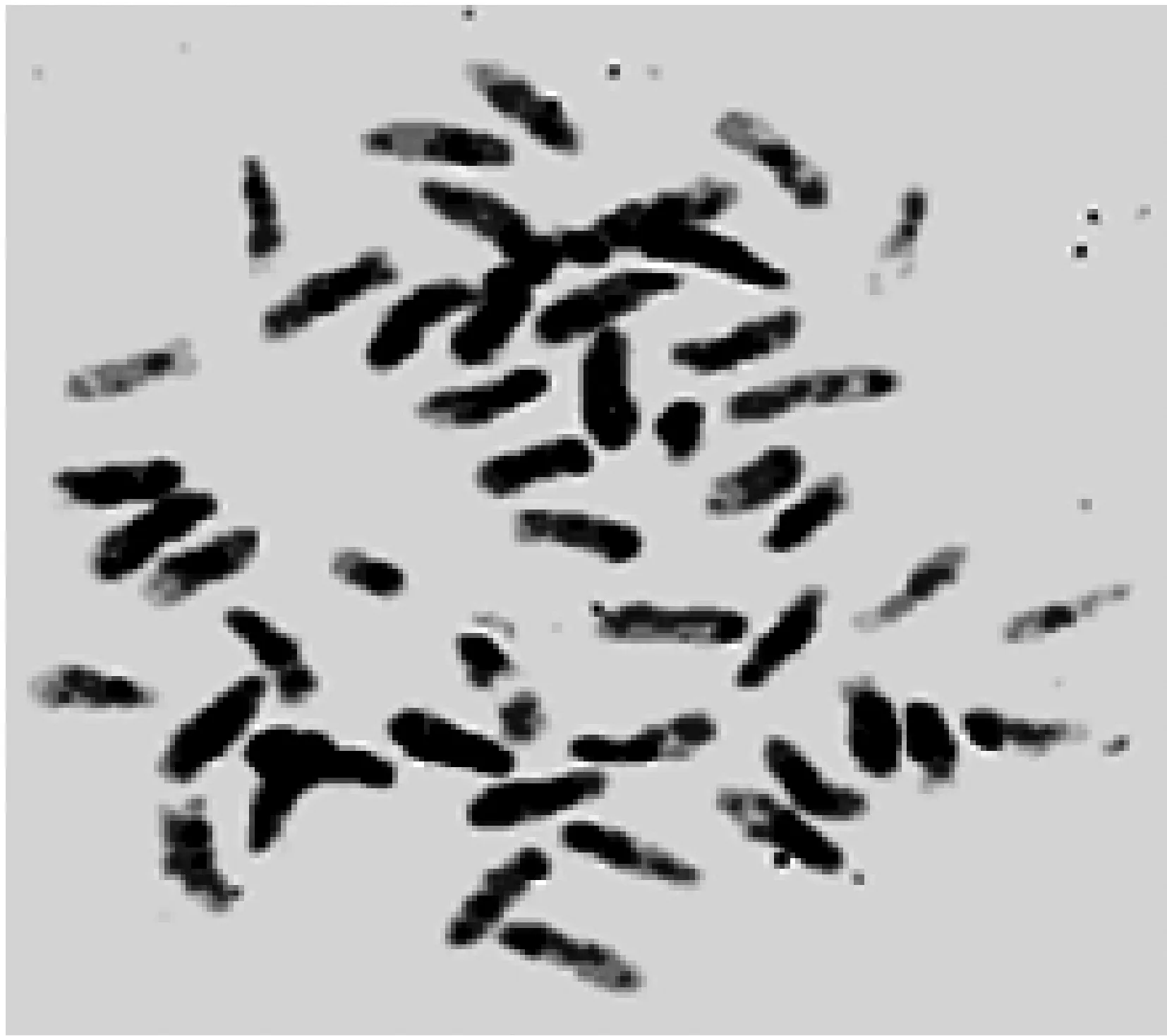
Fig. 1 The results of chromosomal banding only by AluⅠof metaphase in E. malabaricus
2.2 RE banding of E. malabaricus mitotic chromosomes
After being treated with enzyme Alu I, most E.malabaricus metaphase chromosomes showed multiple bands in sharp contrasts between light and dark bands (Fig. 2A-C) most chromosomes showed 8—10 bands, even the smallest one showed 4 bands. From a good metaphase (Fig. 2C) which gives the corresponding karyotype (Fig. 2D): the bands of homologous chromosomes were consistent with each other,both the number and distribution had obvious characteristic and relatively stable on each pair of chromosomes. Fig. 2E showed the same bands signs which compared part of metaphase chromosomes from Fig.2B and Fig. 2C. As indicated in the karyotype analysis shown in Fig. 2D, the longest and shortest chromosome had relative lengths of 4.94 and 2.83, respectively, and their length ratio was 1.75 (Tab. 1), which was higher than their length ratio in the exact metaphase mitotic karyotype (1.5 times), suggesting that this cell was in premetaphase.
2.3 Painting of chromosomes of E. malabaricus by human sex chromosome-specific DNA probes
In order to separate the inserted fragment library more easily, which used in this experiment, T3 and T7 primer library plasmids were used as a template, and the human chromosome-specific DNA fragments were obtained using PCR method. The product of part of the DNA library obtained by PCR amplification was shown in Fig. 3. The product was purified on a CHROMA Spin200 column (Clontech) labeled with biotin as a chromosome-painting probe. The result showed that each 50 μg DNA sample was labeled with 200 ng human genomic DNA, and 20 μg herring spermDNA, under a human Cot-1DNA blocking condition in each of the depicted systems. The X chromosome library probes hybridized to female chromosome; both the female two X chromosome showed a very strong positive signal, and the other chromosome hybridization signal was not detected (Fig. 5A). Y chromosome library probes hybridized on female chromosomes,there were no hybridization signals found on the chromosomes (Fig. 5B). The FISH chromosome analysis was not performed with a uniform international standard karyotype. When employing the X chromosome probes, grouper genomic hybridization in some chromosomes can be seen clearly in the cross-hybridization signal bands. The statistical analysis of the karyotype analysis software analysis revealed hybridization signals located on chromosomes 7, 13, and 22 (Fig. 5C), their most recent margin per-centage centromere distances were 62.3%, 43.4%, and 44.4%, respectively (Fig. 4). After measurement,grouper X chromatin in human homologous fragment size account for 4.63% of its genome. The Y chromosome probe and grouper chromosome hybridization were not detected (Fig. 5D).
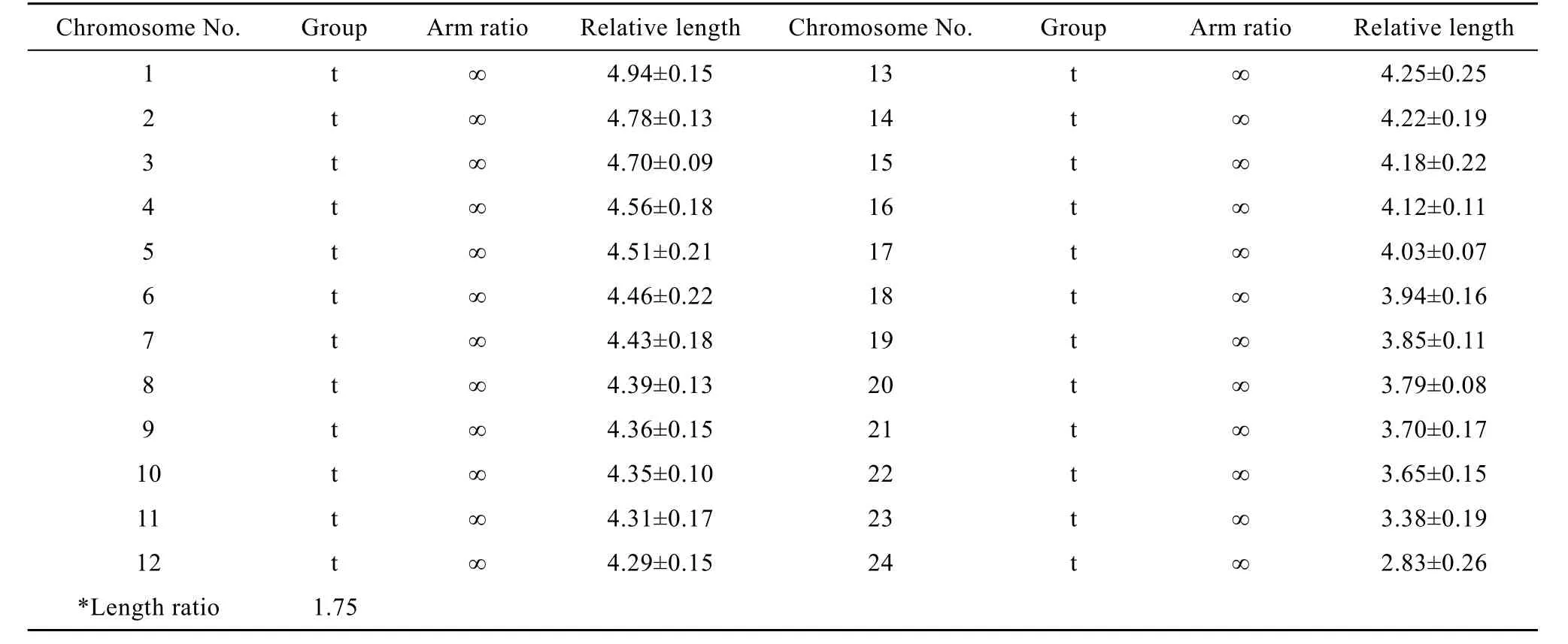
Tab. 1 The relative length and arm ratio of metaphase with restriction endonuclease Alu Ⅰdemonstrated by in situ nick translations of E. malabaricus
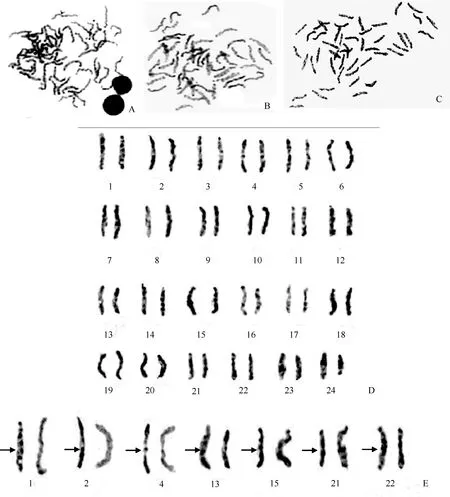
Fig. 2 The results of chromosomal banding by in situ nick translation of metaphase with E. malabaricus
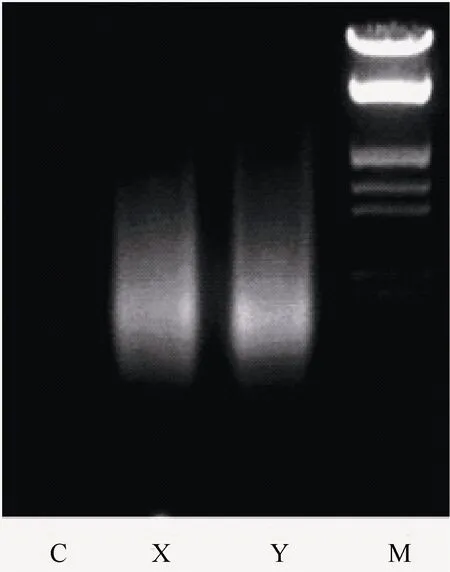
Fig. 3 PCR results of partial samples from human sex chromosome-specific plasmid DNA
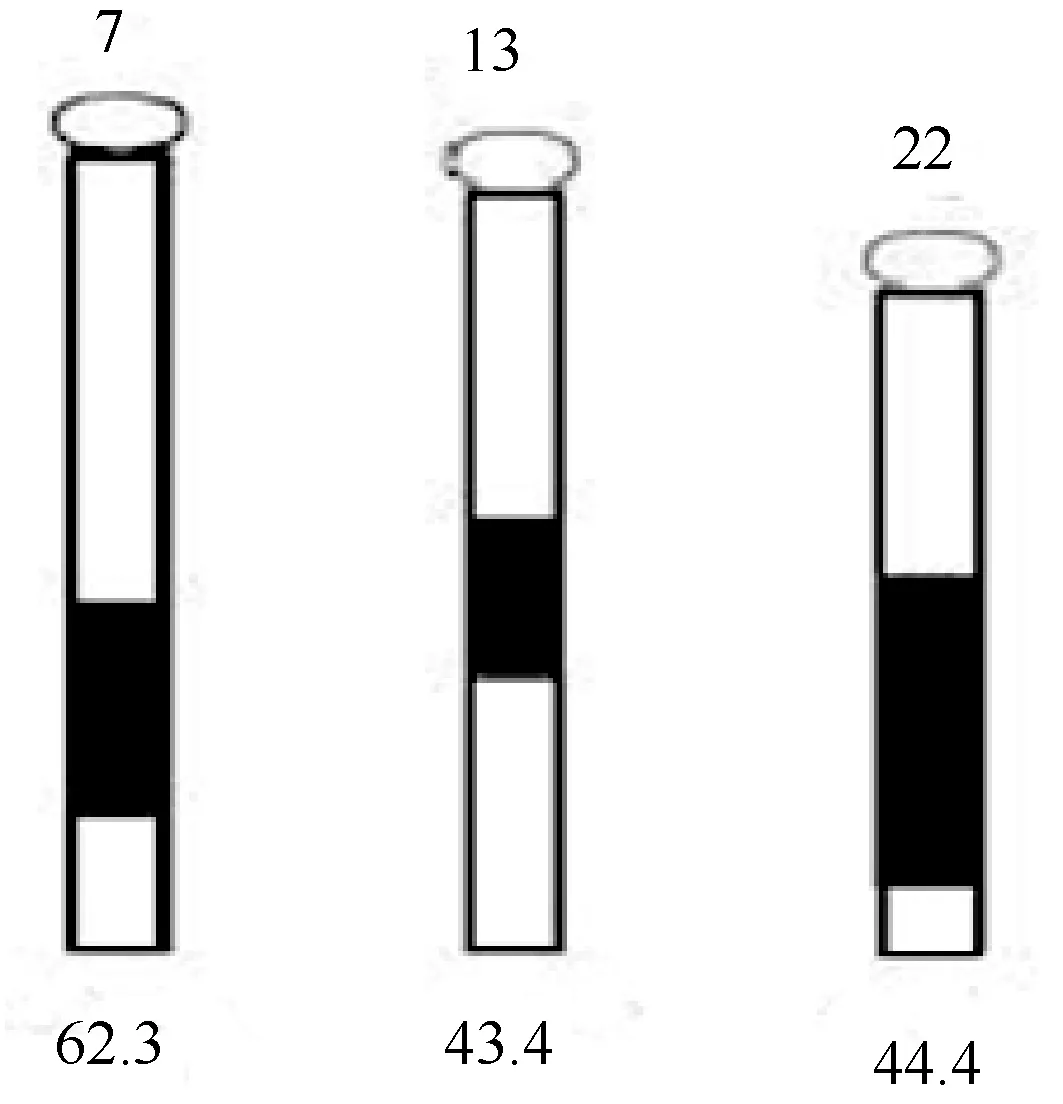
Fig. 4 The location of the fragments homologized to human X chromosome DNA appears in the chromosomes of E. malabaricus The numbers indicate the chromosome number, the black box indicates the location of the homologous fragment, and the numbers under each chromosome indicates the percentage distance between the fragment and the centromere

Fig. 5 Chromosome painting of E. malabaricus chromosomes with biotinylated human sex chromosome-specific DNA library
3 Discussion
In recent years, with the serious damage of rocky and coral reefs, as well as resource over-exploration,the numbers of E. malabaricus have gradually decreased, so it is necessary to make some researches on these species from different aspects. In this study, in situ nick translation and REs were combined to offer a new method on studying the Chromosome banding mechanism, which was expected to make further investigation on the evolutionary relationships on marine fish chromosomes. From the previous studies, we have discovered that lower mammals was not the original starting point of human sex Chromosome evolution, so proceed from lower vertebrates might be able to find some traces about the origins and evolution of human sex chromosomes.
To date, about 24 species of the Epinephelus subfamily have been studied for their karyotype. Karyotypes specialization exists in some of the Epinephelus genus, e.g., E. tauvina[13], E. sexfasiatus[14], E. diacanthus[1]and E. malabaricus[3]. Thus, we found that E.malabaricus may be one of species emerging relatively early in the evolution of Epinephelus genus in our previously study. The characteristics of RE-banding lies in its sequence specificity recognition. On certain occasions, it reveals the essence of chromosome structural variation better than other methods[15]. At present, there are many REs used in chromosome banding (e.g., Hae Ⅲ, Hind Ⅲ, Alu Ⅰ, and Hinf Ⅰ), which were widely studied in different species of animals. This study used the RE Alu Ⅰ for the banding study of E. malabaricus, with the recognition sequence of AG↓CT. According to the results, after being treatment with Alu Ⅰ, all 48 chromosomes showed rich banding, and the characteristics of the bands were consistent with each homologous chromosome. This result is very meaningful, because Alu Ⅰis a DNA RE, and the digestive banding mechanism needs to be further studied to understand why it achieved good results on the chromosomal level.To date, there have been many reports on the studies of RE banding in various organisms, such as primates(including human), rodents, insects, etc. However,only a few study involved certain fish species have been reported[16]. This study used the RE Alu Ⅰ(recognizing four bases) to mediate in situ nick translation and acquired relatively reliable banding differentiation and clear banding characteristics. This suggests that application of the RE-banding technique is an easy and feasible cytogenetics method for fish chromosomes and chromatin structures that are not easily banded with conventional methods.
In this study, the fluorescent in situ hybridization(FISH) method of inhibiting was used[17,18], when the X chromosome specific DNA probe of human hybridized with a female chromosome, both the two female X chromosome were provided with positive fluorescent signal in the chromatin region, while the negative in Chromosome heterochromatin region. But when Y chromosome specific probes hybridized with a female chromosome, none of the chromosome chromatin areas showed hybridization signals, these showed that the probe has a high specificity and purity[19]. Cytogenetic methods validated and molecular biological methods came to this conclusion, the results confirmed that the homologous sequences present in the chromatin regions. While the Y chromosome specific probe hybridized with chromosome of E. malabaricus. There was no hybridization signal, which showed that there was no homologous sequences in heterochromatin region of the chromosomal DNA of E. malabaricus.This might because the homologous fragments were too small between them and didn’t reach the effectively detection of chromosome painting technique(1Mb)[20]. Genome of E. malabaricus had homologous fragments with chromatin of human, which were scattered in three pairs of homologous chromosomes. This shows that X chromatin components may had existed in early origin of fish. It is believed that X chromosome chromatin-conserved fragments in fish were very likely the material base of origin and evolution of the X chromosome of human. In addition, the conserved X chromatin fragment size of its haploid genome was 4.63% in E. malabaricus, 4.5% in zebrafish, 2.6% in Mastace mbelus aculeatus, and 2.0% in Monopterus albus[21]. This is consistent with the fact that E.malabaricus and zebrafish belong to Perciformes and Cypriniformes; both of them have high levels of conserved fragments of X chromatin[22]. Based on this, we could infer that the evolution of X chromatin occurred slowly from lower to higher fish.

